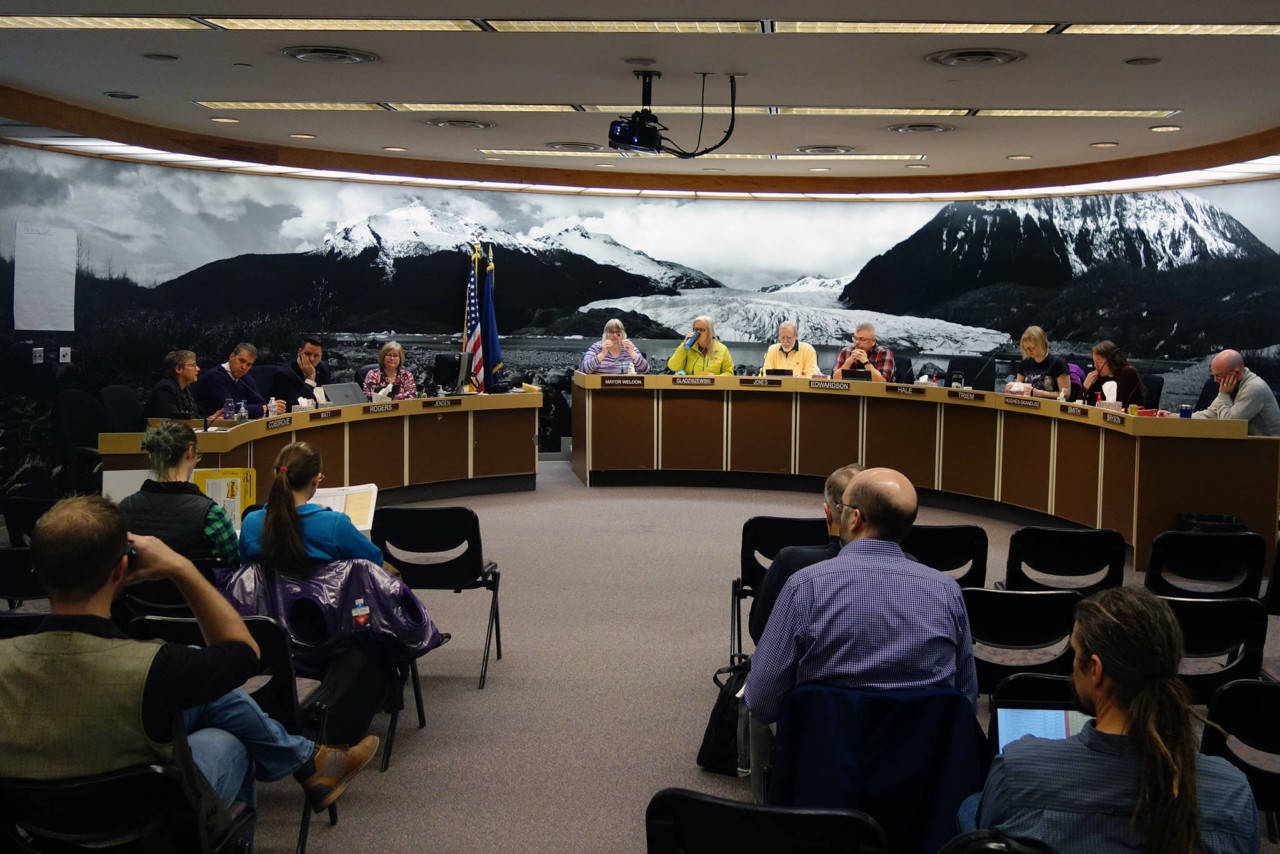Gov. Mike Dunleavy wants the state’s economy to get going again, but exactly how and when that will happen is an open question local leaders want to help answer.
“The message that the governor heard most often was we need flexibility, so it’s not one size fits all,” said City and Borough of Juneau Assembly member Loren Jones.
Jones, who is also a board member of the Alaska Municipal League, was part of a conference call Friday with the governor and other league members.
“And I think the governor heard that,” Jones said.
The governor reached out to several mayors and the Alaska Municipal League Thursday and Friday, to seek input from local communities regarding his plan to reopen the state’s economy. Dunleavy has said he believes the state’s health care capacity has been built up to the point certain sectors of the economy closed to due the COVID-19 pandemic can begin to reopen.
[Dunleavy wants to get economy going again, slowly and safely]
On Wednesday the governor announced non-urgent and elective medical procedures could be resumed, and at a press conference on Thursday said he had been in conversations with representatives from the retail and hospitality industries about reopening those next.
“We want to do this as quick as possible, but not at the expense of the health of Alaskans,” Dunleavy said at Thursday’s press conference. “The moment we see something that is a spike or a cluster, then we’re going to act very quickly.”
The governor did not give a timeline for when he wanted to reopen certain sectors, according to Nils Andreassen, AML executive director.
“Not anything different how from he’s talked about it in his press conferences, opening up sector by sector, community by community,” Andreassen said.
There were about 45 communities on the line with the governor Friday, according to Andreassen. While there was little consensus about when to open up, there was consensus about how.
“There’s definitely consensus around caution, on data and testing, on really having some element of local control in the decision to open up a community,” Andreassen said.
Access to data, testing, first responders and other resources that will enable local municipalities to make the best decisions for themselves was something community leaders were asking for, according to Andreassen.
“We need data and we need testing, without that localized data, without that communication with statewide data it’s going to be hard for the Assembly to think about opening up,” Jones said.
According to Jones, the Assembly currently doesn’t think opening up the city’s economy is the best idea, but they’re keenly aware of the need to do so.
“Public health is what we’re trying to preserve,” said Deputy Mayor Maria Gladziszewski, “and that includes people having enough money to buy the items that they need. It’s not like economic criteria is not involved in public health.”
The Assembly was still working on a plan for deciding when to open up, Gladziszewski said, but that any plan should be based on science. Juneau and Alaska were in an advantageous position, she said, being at the “trailing edge of infection.” Alaska should learn from the experience of other cities, states or nations when planning its own response, Gladziszewski said.
State officials have said Alaska’s COVID-19 numbers have been trending down and health care capacity built up. At Thursday’s press conference Alaska’s Chief Medical Officer Dr. Anne Zink said that was what’s led to the state deciding to experiment with changes to health mandates.
“Alaskans have the ability to change the shape of this disease,” Zink said, “and that’s part of the reason why we’re like, ‘OK, let’s see what things we can safely start to move and to open up.’”
According to the state’s Coronavirus data website, as of April 16, 9,450 tests had been conducted in Alaska, and the daily number of tests has trended upwards since late March.
At a press conference in Anchorage Friday, Dunleavy said his administration would be looking at its health mandates over the weekend, and that discussions about reopening the retail sector would begin Monday.
• Contact reporter Peter Segall at psegall@juneauempire.com. Follow him on Twitter at @SegallJnoEmpire.

